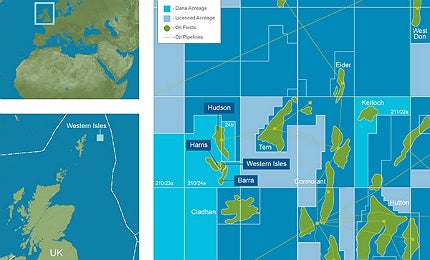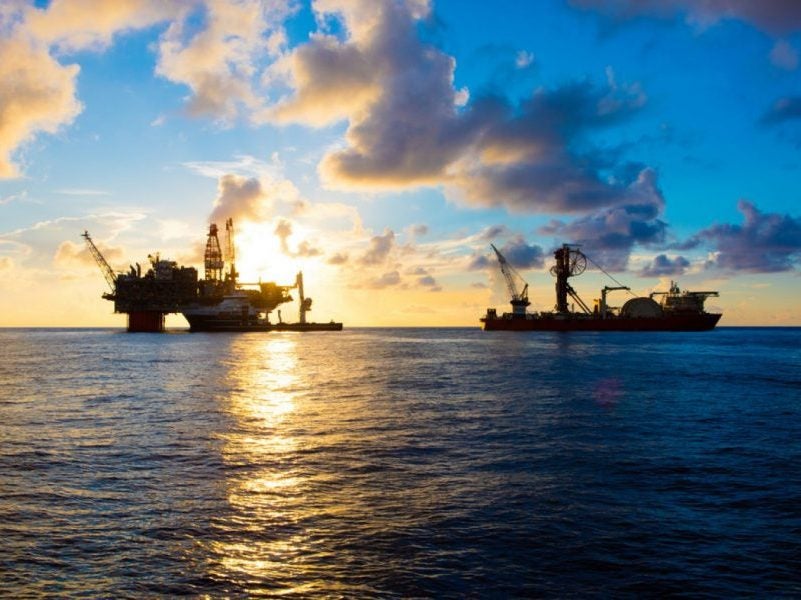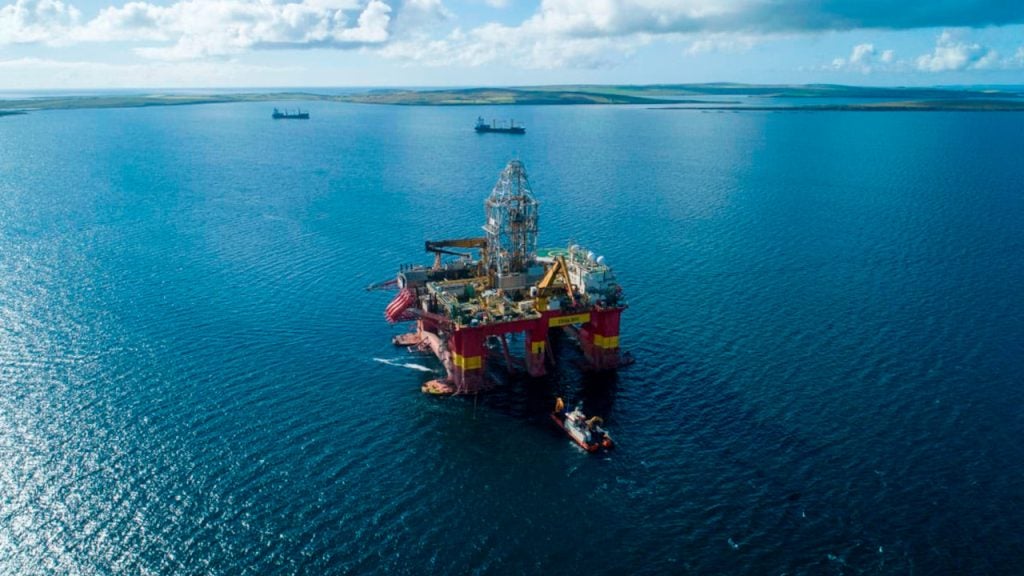The Western Isles Development (WID) Project is located in Block 210/24a, in the northern North Sea, UK. The project involves the development of two oil fields, namely Harris (earlier East Rinnes) and Barra (earlier Melville), which are located 160km east of the Shetlands.
The oil fields are situated in a water depth of 165m and a reservoir depth of 6,000ft. Aberdeen-based Dana Petroleum is the operator of the WID Project, with an equity share of 77% in block 210/24a. Dana Petroleum is a subsidiary of Korea National Oil Corporation (KNOC). CIECO Exploration and Production (UK) (CIECO, London, UK), a subsidiary of ITOCHU Corporation, owns the remaining 23% equity in the project.
The estimated investment in the Western Isles Development Project is $2bn. The UK Department of Energy and Climate Change (DECC) approved the WID Project in December 2012.
Drilling works commenced in September 2013, two months ahead of schedule, by Diamond Offshore’s drilling rig Ocean Nomad. First oil was produced in November 2017. The field life is estimated to be 15 years.
Discovery of the four North Sea oil accumulations
The WID Project is composed of four oil accumulations: Harris, Barra, Lewis (earlier West Rinnes) and Uist (earlier South East Rinnes). Dana discovered these accumulations during exploration drilling from 2005 to 2009 in the northern North Sea, UK.
The Rinnes and Melville oil fields were collectively renamed as WID. The hydrocarbons are situated inside the Brent reservoir group of the middle Jurassic age. Dana discovered oil at Melville in 2005. The 210/24a discovery well found oil inside the Brent reservoir with an oil column of approximately 100ft.
Oil at West Rinnes and East Rinnes areas in Block 210/24a was found in 2008. Both the discovery wells were found to have high standard oil, Brent reservoir sands and 78,000 barrels a day of flow rate.
Two more oil discoveries were made at South East Rinnes and South West Rinnes to the south-west of Hudson oil field in 2009.
The oil reserves at the two offshore fields of the WID project are estimated to be 100 million barrels of oil equivalent (Mboe), out of which 45Mboe can be recovered feasibly.
Western Isles Development Project plan
The field development plan for the WID Project envisaged drilling of five production wells, four water injection wells and two exploration wells, and installing two eight-slot subsea production manifolds and related flow lines. Three more exploration wells are also planned to be drilled in future. The first production well was completed in April 2014 and successfully flow-tested.
The wells are connected to a new floating production, storage and offloading vessel (FPSO). The new FPSO was designed using Sevan Marine’s technology and was constructed by Cosco. The cylindrical FPSO is 90m-wide, weighs more than 28,000t, and has a production capacity of approximately 44,000 barrels of oil a day, with an additional tank storage capacity of roughly 400,000 barrels.
Production
The project is expected to have a plateau production rate of 44,000 barrels of oil equivalent per day (boepd) in full operation mode, with the addition of 30,000 barrels of net production a year.
WID Project contractors
Japan Oil, Gas and Metals National Corporation (JOGMEC) provided a financial guarantee for CIECO for the WID Project.
Dana awarded a £8m ($12.4m) contract to Aker Solutions in November 2011, for the management, engineering, procurement and construction of subsea facilities for the project. Aker Solutions supplied and installed nine subsea control modules, topside power units and other associated subsea infrastructure as part of the contract.
In July 2012, Dana Petroleum selected Sevan Marine’s FPSO technology to design the new FPSO for the project. Dana also signed a service and license agreement with Sevan Marine in this regard in December 2012.
Dana Petroleum awarded a $300m contract to Subsea7 to provide engineering, procurement, construction and installation (EPIC) services for the project, in January 2013. The contractual scope included EPIC works for an 11km gas export pipe and two 2.5km pipe bundles. Subsea7 subcontracted Jumbo Maritime in March 2014 to provide the FPSO mooring piles and ground chain installations. The related offshore works began in the fourth quarter of 2014.
In February 2015, Dana Petroleum selected Techflow Marine’s offloading system to operate on the FPSO.
Furgo was contracted by Dana Petroleum to deploy an FCV 600 remotely operated vehicle (ROV) for drilling services at the WID project in March 2016.
Related content
Mariner Area Development, North Sea, United Kingdom
Statoil’s Mariner Area Development project, located in the northern North Sea, calls for the development of Mariner and Mariner East ultra-heavy oil fields with an estimated investment of £4.2bn (approximately $6.7bn).
Alma / Ardmore Field Development, North Sea, United Kingdom
Scotland-based company EnQuest is redeveloping the Ardmore field (known earlier as the Argyll field) located in the central North Sea.









